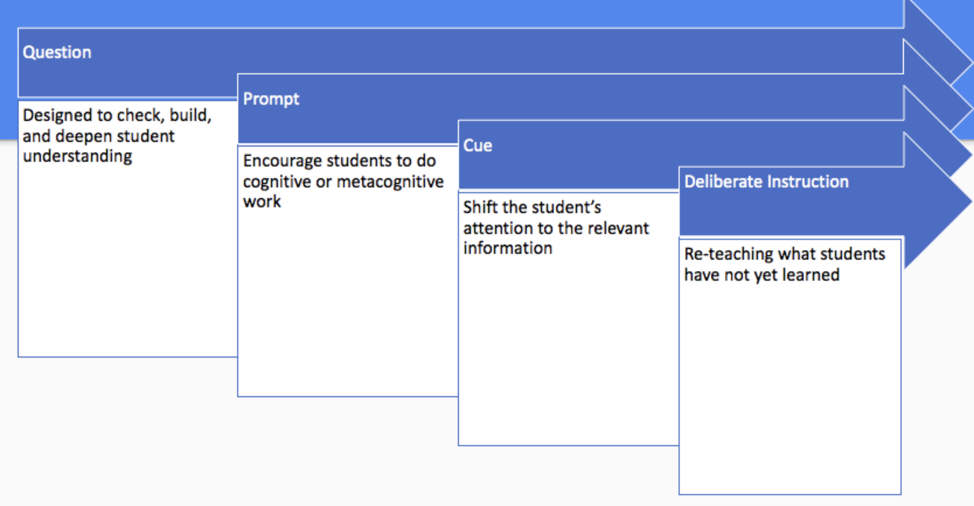One of the most misunderstood words in our educational vocabulary is scaffolding. What does it mean to scaffold for a student? Does it mean I should give him or her less? Should I break it down for the student into tiny pieces? The answer to both of those questions is, NO! When we think about what a student needs to be able to do on iLearn, we know that all students must perform at certain Depth of Knowledge (DOK) levels according to their grade level standard. We must ask all students to do the same level of cognitive complexity, otherwise they don’t have a chance of achieving on iLearn. We should never give one student a DOK 3 task while giving another student a DOK 2 task just because we think they aren’t “ready” or “capable.” The difference should be the scaffolding we provide to students. This summer I attended the Visible Learning Conference where I heard Connie Hamilton speak about scaffolding. In my 30 years in education, I’ve never heard it explained so clearly. So I have been all over the state spreading the word. Scaffolding includes a process of not only providing support to a student, but also making them accountable to critical thinking. In this visual, you see three phases of intervention we can provide to a student after a task is given to the student.

First, we give the student a question or task and ask them to complete or solve it. When a student says, “I don’t get it” or “I don’t know what to do,” we sometimes jump ahead and reteach the student. This often turns into telling the student exactly what to do, but that can take away a student’s opportunity for success and their accountability to think. We first must prompt and cue. A prompt is a question that asks students to search inside their head for the answer. We are asking them to go internal. Examples include:
- What strategy are you going to use?
- What do you know about this task?
- How are you going to approach this task?
We keep prompting the student to come up with something in their experience or prior knowledge that will lead them into an entry point for the task. If they can move forward with a prompt, the feeling of success and accomplishment for the student is huge. They have solved the problem using their own brains, you didn’t have to help at all. If you prompt and that doesn’t get the student into an entry point, then you can cue. A cue is a question or statement that leads them to an external source for information. Examples include:
- Go to page 147 in your text for a similar example.
- Remember the strategy we used yesterday?
- Use the anchor chart we put up last week to help you.
We are providing an external source they can reference. If they gain entry to the task with a cue, they still feel success because they figured it out with just a little support. They still did the work, they were still accountable to the thinking. Then and only then, do we provide some reteaching. The reteaching should be global rather than immediately grabbing their pencil and writing all over their paper. Make sure the student is accountable to the thinking about the task. When teachers say to me, “My students can’t do anything without me, they are always dependent on my help,” I reply with “Well you have been doing all the work. You don’t prompt and cue, you reteach right away when they ask a question.” We need to support students with prompts and cues, not with reteaching. By engaging in effective scaffolding with prompts and cues, we are empowering students to do the thinking and experience the success that happens when they accomplish something on their own. Don’t take that away from your students by going straight to reteaching.
Resources
Please login or register to claim PGPs.
Alternatively, you may use the PGP Request Form if you prefer to not register an account.



